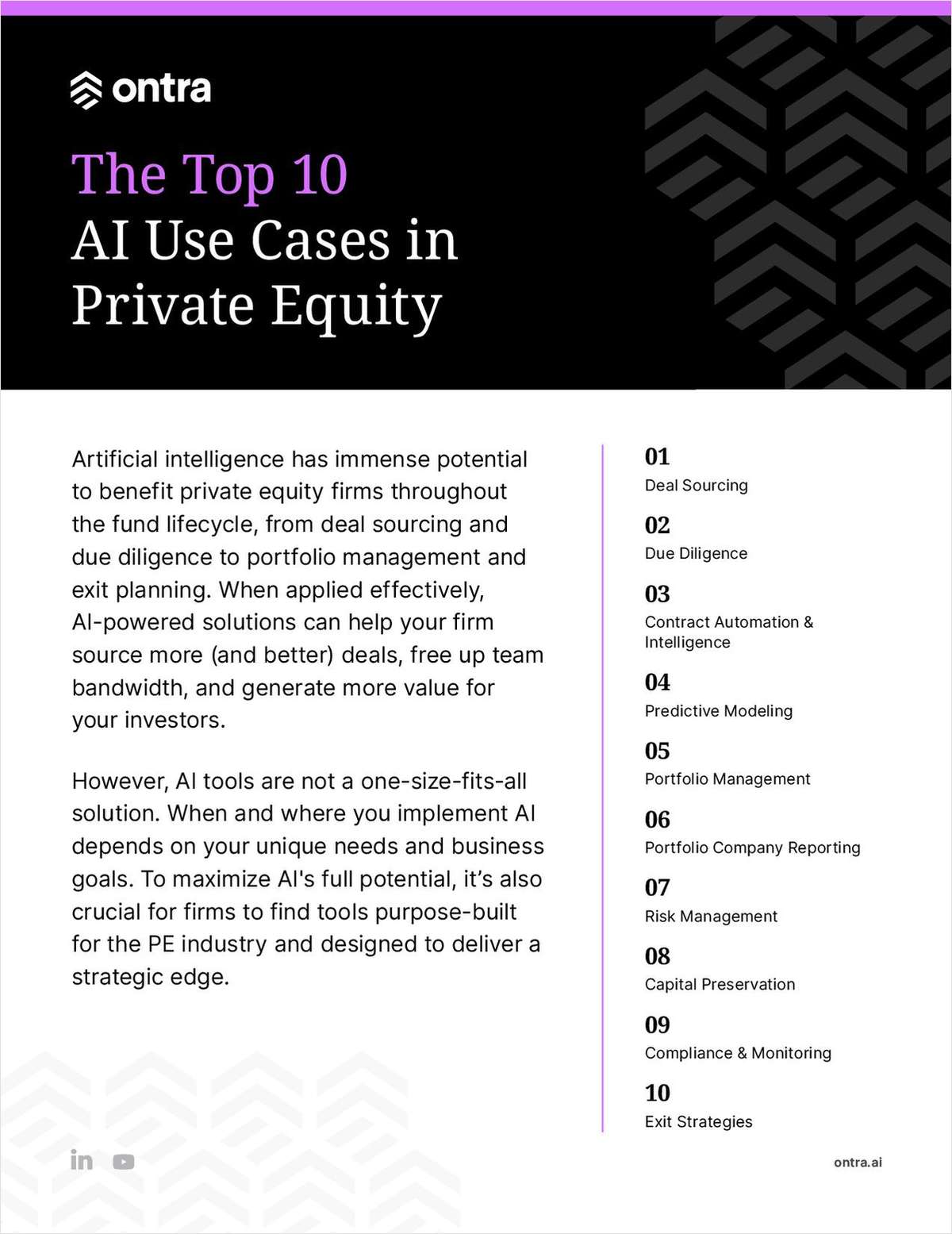Desktop decisions
Desktop automation has been around for years. Ghost was written in 1996 to enable IT support people to clone a computer. ZENworks was introduced by NetWare in 1998 to help manage server and desktop configurations across the network: it is very far from being a new idea. What is interesting about it, however, is that it never stops evolving.
December 05, 2007 at 07:04 PM
7 minute read
Desktop automation has been around for years. Ghost was written in 1996 to enable IT support people to clone a computer. ZENworks was introduced by NetWare in 1998 to help manage server and desktop configurations across the network: it is very far from being a new idea. What is interesting about it, however, is that it never stops evolving.
The basic aims of automation are simple: to reduce your IT costs, to deliver services more quickly and to be more reliable and secure. Automation in itself does not do anything you could not do manually. It is just that you would have more staff than you need, and the chances of everything being done consistently, correctly and quickly would be low. If you are not heavily automated, you are almost certainly inefficient and not delivering a top class IT service. In a rising market this may not be your top priority, but you should be aware of what you are missing, and if you need to reduce costs or improve performance, this is the way to do it.
Here are examples of things you should be able to do if you are fully automated:
- Rebuild a training room of PCs with a different configuration in approximately 15 minutes.
- Have a secretary (not the IT helpdesk) set up a new starter with all the correct settings and equipment (phone, BlackBerry, laptop, accounts for different systems) in about 10 minutes. Just as important, have them disable a temp or contractor's account and retrieve equipment immediately when they leave.
- Run fully up-to-date operating systems and software everywhere, all the time; run incompatible software on the same machines; have the minimum number of licences that are actually being used; and not be constrained by the difficulty of doing it.
- Provide complete support to a person with a laptop in a hotel or airport overseas as if they were in the office.
- Have next to no faults; no manual activities that require an IT person to visit the desk; no repeat requests to sort out the same problem; no onsite IT support staff.
- Receive alerts for any errors and out-of compliance events.
These may not sound very interesting compared with say, a client extranet, but they are all part of operating efficiently. In fact I would say they are a good test of whether you are. The tools to do this are readily available.
You can achieve much of what you need with the tools supplied as standard with Windows Server. Group Policy enables you to control the configuration of PCs and servers down to the last degree. You can also use Group Policy to deploy software as long as it is available in an msi format. Windows Deployment Services will deploy the operating system and enable you, for example, to upgrade more easily to Vista. Distributed File System will replicate a library of software applications and system images across all your sites so they are available for rapid local installation.
If you are short of cash, there are Open Source tools such as OCS for inventory and software distribution, and OTRS for helpdesk. The problem with this is that by the time you have implemented these, the true cost is likely to be as much as or more than the commercial tools.
To go further than the tools supplied with Windows or Open Source you need an integrated toolset, like Altiris or LANDesk. For example, Altiris Deployment Solution uses multicast to deploy an OS to multiple computers in a training room at the same time without saturating the network. The pre-boot operating system enables you to control what happens on the machine remotely, even before it has loaded Windows. This means you can rebuild, or upgrade to Vista, for example, without ever visiting the desk. Integrated tools will give the helpdesk a complete inventory and history of the PC when they are trying to solve a problem. A packager such as Wise Package Studio will enable you to build an msi for your custom code so it can be installed automatically with the software distribution tool. Other tools from companies such as Quest and MTech enable a department secretary to provision multiple services to users automatically without contacting the helpdesk, and with less risk of mistakes or delays.
One of the UK's largest law firms is introducing a worldwide desktop automation system. It will roll out a large number of in-house customisations of Microsoft Office to integrate with its document management system. This would just not be realistic without heavy automation. On the other hand, I visited a smaller firm where the IT director did not think he would be able to persuade the partners to buy the tools, even though the department was overstaffed and costing the practice more than it would if it used the tools. Some people seem more comfortable with staff costs than paying for automation tools.
Several law firms I have spoken to recently are introducing thin client systems with no desktop software at all. This simplifies desktop administration, but you then have a significant potential problem with application compatibility on the servers. Software virtualisation is a new technique to deal with this. The software runs in an isolated layer separated by a filter from the operating system, so you can run incompatible software in separate layers. This allows you to run, for example, different versions of the Oracle client and to determine which version runs when you open an application, without doing extensive compatibility testing. Even the user settings and registry keys are isolated. A problem package can be rolled back leaving the system exactly as it was – not the case with a standard software installation. As a result you need fewer servers and can load balance more flexibly across your Citrix infrastructure.
Automation has a significant impact on staffing in IT. You need far fewer people, but with a higher skill level. Basically you no longer need the jacks of all trades, but you do need specialists. The work on the ground can be done by facilities staff instead of IT people. The technical work, however, needs highly skilled people.
There are a number of areas where things can go badly wrong. The wrong instruction sent out by mistake to the wrong computers can cause far more destruction in one go than an incompetent desktop support person working on one machine. For example, a custom software package will usually change the machine registry. If it makes the wrong change you cannot just reverse it. There is no record of what was there before. You should never, ever let an inexperienced person distribute a software package, or a group policy.
This presents a staffing dilemma. A software packaging or group policy expert is wasted working in one place for a long time. A package is a package, deployed to one machine in one company, or 10,000 machines in 10 companies. On the other hand, outsourcing without automating just swaps your management for theirs. It is unlikely to change the skills levels or the outcomes much. We feel that the way of the future is to buy in automated desktop and server management as a service. For example, we have a software library appliance that contains OS images and standard applications with automated installations. Add your licences and you are done.
Anthony Yates is a director of Airdesk.
NOT FOR REPRINT
© 2024 ALM Global, LLC, All Rights Reserved. Request academic re-use from www.copyright.com. All other uses, submit a request to [email protected]. For more information visit Asset & Logo Licensing.
You Might Like
View All
Can AI Beat the Billable Hour? Legal Tech Firms Say Selling AI Products to Law Firms Still a Challenge

More Young Lawyers Are Entering Big Law With Mental Health Issues. Are Firms Ready to Accommodate Them?

Trending Stories
- 1Infant Formula Judge Sanctions Kirkland's Jim Hurst: 'Overtly Crossed the Lines'
- 2Abbott, Mead Johnson Win Defense Verdict Over Preemie Infant Formula
- 3Preparing Your Law Firm for 2025: Smart Ways to Embrace AI & Other Technologies
- 4Greenberg Traurig Initiates String of Suits Following JPMorgan Chase's 'Infinite Money Glitch'
- 5Data-Driven Legal Strategies
Who Got The Work
Michael G. Bongiorno, Andrew Scott Dulberg and Elizabeth E. Driscoll from Wilmer Cutler Pickering Hale and Dorr have stepped in to represent Symbotic Inc., an A.I.-enabled technology platform that focuses on increasing supply chain efficiency, and other defendants in a pending shareholder derivative lawsuit. The case, filed Oct. 2 in Massachusetts District Court by the Brown Law Firm on behalf of Stephen Austen, accuses certain officers and directors of misleading investors in regard to Symbotic's potential for margin growth by failing to disclose that the company was not equipped to timely deploy its systems or manage expenses through project delays. The case, assigned to U.S. District Judge Nathaniel M. Gorton, is 1:24-cv-12522, Austen v. Cohen et al.
Who Got The Work
Edmund Polubinski and Marie Killmond of Davis Polk & Wardwell have entered appearances for data platform software development company MongoDB and other defendants in a pending shareholder derivative lawsuit. The action, filed Oct. 7 in New York Southern District Court by the Brown Law Firm, accuses the company's directors and/or officers of falsely expressing confidence in the company’s restructuring of its sales incentive plan and downplaying the severity of decreases in its upfront commitments. The case is 1:24-cv-07594, Roy v. Ittycheria et al.
Who Got The Work
Amy O. Bruchs and Kurt F. Ellison of Michael Best & Friedrich have entered appearances for Epic Systems Corp. in a pending employment discrimination lawsuit. The suit was filed Sept. 7 in Wisconsin Western District Court by Levine Eisberner LLC and Siri & Glimstad on behalf of a project manager who claims that he was wrongfully terminated after applying for a religious exemption to the defendant's COVID-19 vaccine mandate. The case, assigned to U.S. Magistrate Judge Anita Marie Boor, is 3:24-cv-00630, Secker, Nathan v. Epic Systems Corporation.
Who Got The Work
David X. Sullivan, Thomas J. Finn and Gregory A. Hall from McCarter & English have entered appearances for Sunrun Installation Services in a pending civil rights lawsuit. The complaint was filed Sept. 4 in Connecticut District Court by attorney Robert M. Berke on behalf of former employee George Edward Steins, who was arrested and charged with employing an unregistered home improvement salesperson. The complaint alleges that had Sunrun informed the Connecticut Department of Consumer Protection that the plaintiff's employment had ended in 2017 and that he no longer held Sunrun's home improvement contractor license, he would not have been hit with charges, which were dismissed in May 2024. The case, assigned to U.S. District Judge Jeffrey A. Meyer, is 3:24-cv-01423, Steins v. Sunrun, Inc. et al.
Who Got The Work
Greenberg Traurig shareholder Joshua L. Raskin has entered an appearance for boohoo.com UK Ltd. in a pending patent infringement lawsuit. The suit, filed Sept. 3 in Texas Eastern District Court by Rozier Hardt McDonough on behalf of Alto Dynamics, asserts five patents related to an online shopping platform. The case, assigned to U.S. District Judge Rodney Gilstrap, is 2:24-cv-00719, Alto Dynamics, LLC v. boohoo.com UK Limited.
Featured Firms
Law Offices of Gary Martin Hays & Associates, P.C.
(470) 294-1674
Law Offices of Mark E. Salomone
(857) 444-6468
Smith & Hassler
(713) 739-1250










